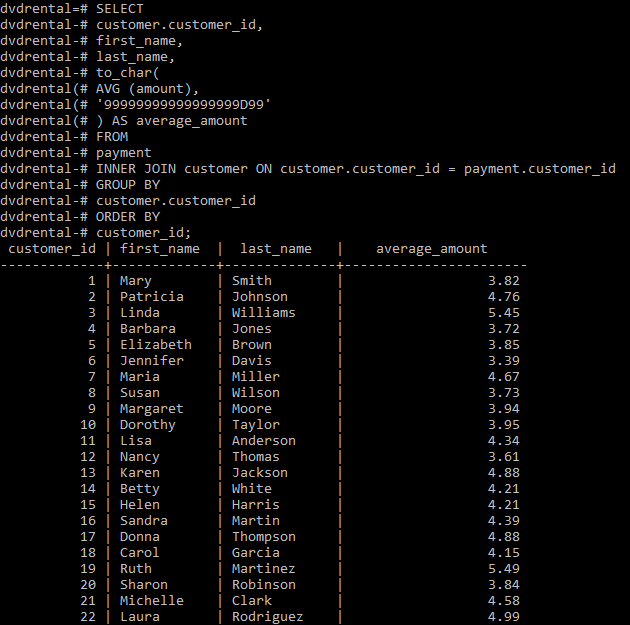

We can easily create another one if we change the name attribute: Product.create(name: 'Slippers', category: Category.first, tags: ) Given we have the following product: Product.create(name: 'Shoes', category: Category.first, tags: ) We want each product to be unique, let’s see some examples to clarify this concept. So Rails treats an array column in PostgreSQL as an Array in Ruby, pretty reasonable! Validations Product.create(name: 'Shoes', category: Category.first, tags: )
POSTGRESQL ARRAY FUNCTIONS HOW TO
It’s also valuable to see how to use the array field within Rails, let’s try: $ rails c You can find more information at the PostgreSQL official documentation about arrays and its functions. There’s a lot more to talk about arrays in PostgreSQL, but for our example this is enough. We were also able to find a record searching for a specific tag using the ANY function. > select * from products where 'winter' = ANY(tags) Īs this example demonstrates, searching for records by an array with its values in the order they were inserted works, but with the same values in a different order does not. > insert into products(name, category_id, tags) values('T-Shirt', 3, ''

Let’s explore what we can do with this kind of field using the postgres console: $ rails db To create this kind of column we use the following syntax in our migration: create_table :categories do |t| Ĭreating these tables via migrations is nothing new, except for the column tags which will have the Array type in this case. The name field will be a simple string, category_id will be the foreign key of a record in the Category model and tags will be created by inputting a string of comma-separated words, so: “one, two, forty two” will become the tags: “one”, “two” and “forty two” respectively. Suppose we have a Product model with the following fields: name, category_id and tags. In order to demonstrate its usage it’s useful to explain the context where this was used. Rails 4 supports arrays fields for PostgreSQL in a nice way, although it is not a very known feature. Note that using a %TYPE declaration inside the function body actually works dynamically in that it looks up the type in the system catalog at the first call of every session.Rails 4 and PostgreSQL Arrays Jul 15, 2014 RETURNS ANYELEMENT AS - derived from input type This works for any array type: CREATE OR REPLACE FUNCTION f_arr_test_polymorphic( ANYARRAY) You might be better off with a polymorphic type to begin with. So it's no problem that temp objects are dropped at the end of the session. No persisted connection to the used template. You might as well make that a temporary view or table, since the type in the function signature is converted to the underlying type immediately. RETURNS foo.i%TYPE AS - example: return element type Now your function works: CREATE OR REPLACE FUNCTION f_arr_test( v_foo_i_arr.i_arr%TYPE) Or a (temporary) table: CREATE TEMP TABLE foo_i_arr AS SELECT ARRAY (SELECT i FROM foo LIMIT 0) AS i_arr (Temporary) view to register the array type, optionally empty ( LIMIT 0): CREATE TEMP VIEW v_foo_i_arr AS Template table: CREATE TABLE foo (i int) But there is a simple workaround to register the according array type: Create a (temporary) table or view with the desired array type. The %TYPE construct can only copy the exact type.


 0 kommentar(er)
0 kommentar(er)
